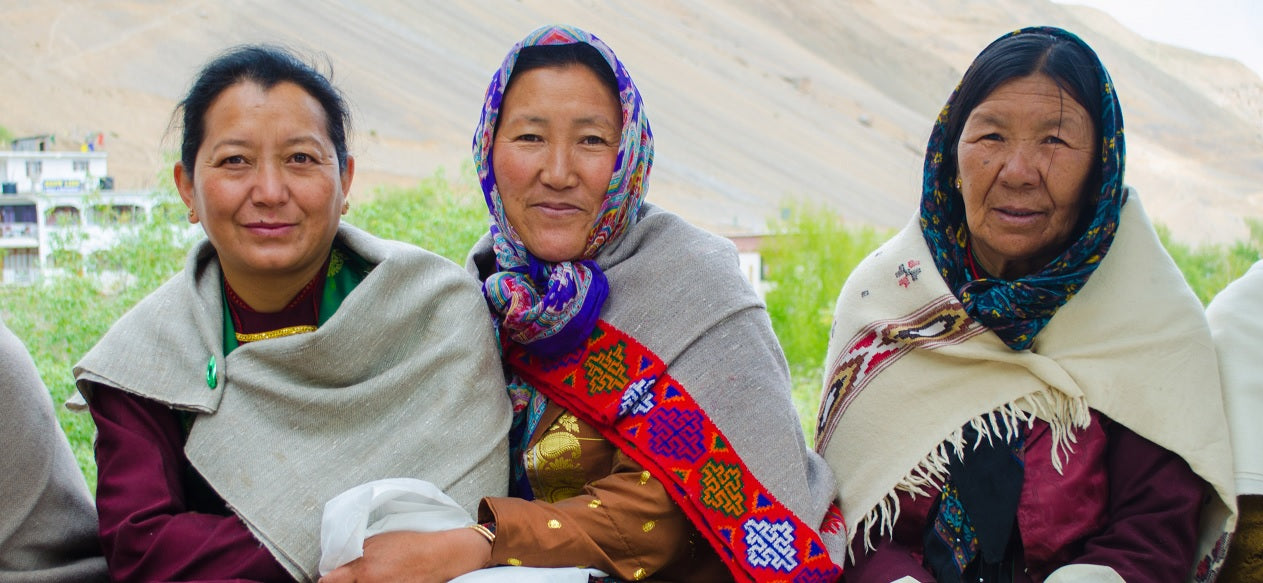We have a strange connection with the mountains. Years ago we (Sai & Prachi) met on a trek in the Himalayas. From then on, we have longed to be in the mountains. One thing that has always attracted us is the purity of the food; how the simplest of foods taste delicious up in the mountains. And this purity becomes a part of the people living there. Everything about them symbolises purity.
Life in Mumbai, where we live, is the completely opposite. Here, nothing is pure. And this is true for all the cities across the world. Years ago, foods across India were made based on the seasons and their goodness. No packaging. No branding. Just pure good food. Today, for us in the cities, purity is when a product looks clean and is packaged. Not a fruit which may have some soil on it.
We are bombarded with ads wherever we are about how pure or healthy or exceptionally tasty some brand is. They are all packed in attractive packaging to showcase their goodness. Walk to the fresh produce section in the supermarket and you will notice the same vegetables and fruits all year round.
Just a few decades ago, in India, foods were created according to seasons and regions. With every season, the ingredients changed and the flavours of the ingredients themselves changed. The foods that were created were not only flavourful but were also good for you. In fact food was medicine. This changed with what we call the ‘green revolution’ and the birth of consistency.
Companies look for consistency so that their processes can be efficient. No wonder we have the same flavours in everything that we eat. All the different kinds of packaged chips available today have the same flavours – Salted, Barbecue, Masala, cream and onion, tomato and a few more. It’s the same with any other packaged food. It is good for them. But is it good for us? Is it good for our planet?
For consistency, you need ingredients to taste the same at all times. Plus you need ingredients all year round. They need to be shaped a certain way for efficient processing. It should be a certain colour. As they grow bigger, more and more quantities of the same ingredients are needed. They need consistency. So more and more farmland is now occupied by the same ingredient which needs to be grown a certain way. This results in other varieties of the ingredients losing the space for this one. In case the flavour still isn’t good, flavours are added to compensate for the loss. Eventually what we have as we can see today is a monoculture farm with absolutely no variety.
In a country which had close to 1,10,000 varieties of rice till around 1970 has less than 6,000, most of which exist in negligible proportion. The same applies to all other grains, fruits, vegetables and everything we eat not just in India but across the world.
A country with such diversity in food which took nature thousands of years to create was in fact destroyed by the so called ‘green-revolution.’ Outputs increased for years and then started plummeting. For similar outputs, more and more chemicals were needed, since now the soil was completely stripped of all its nutrients.
In the olden days, everything from tomatoes to potatoes to spices and herbs were so diverse and flavourful and yet today, in search of consistency, we have lost not just the flavours and entire varieties but also the goodness of foods. Tomatoes don’t taste like tomatoes anymore. Fruits are mostly bland or sour. Herbs do not have the beautiful aroma that they had.
It’s just like life today. We are all told to be that one consistent person. We are not seen for the uniquely amazing person we are. And that’s the problem with foods today as well. They are so unique and diverse, yet companies want them all to be the same for ‘ease of use’.
Let’s ask ourselves this question – do we want to be like everyone else or do we want to be who we truly are? As they say “We are what we eat.”


Share:
Eating good. Eating fresh.
Eating good. Eating fresh.